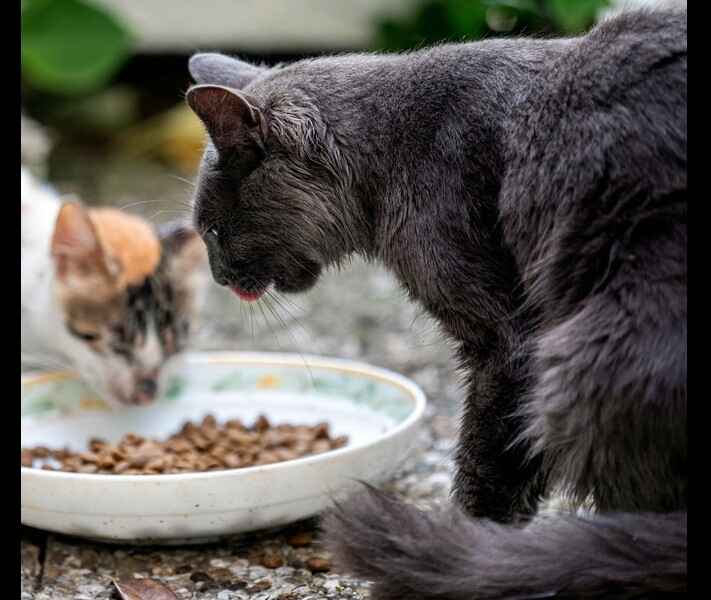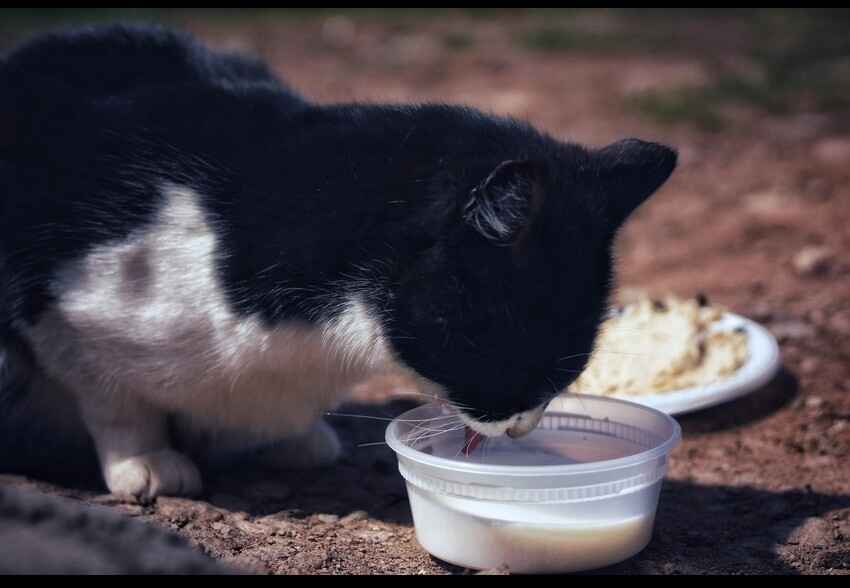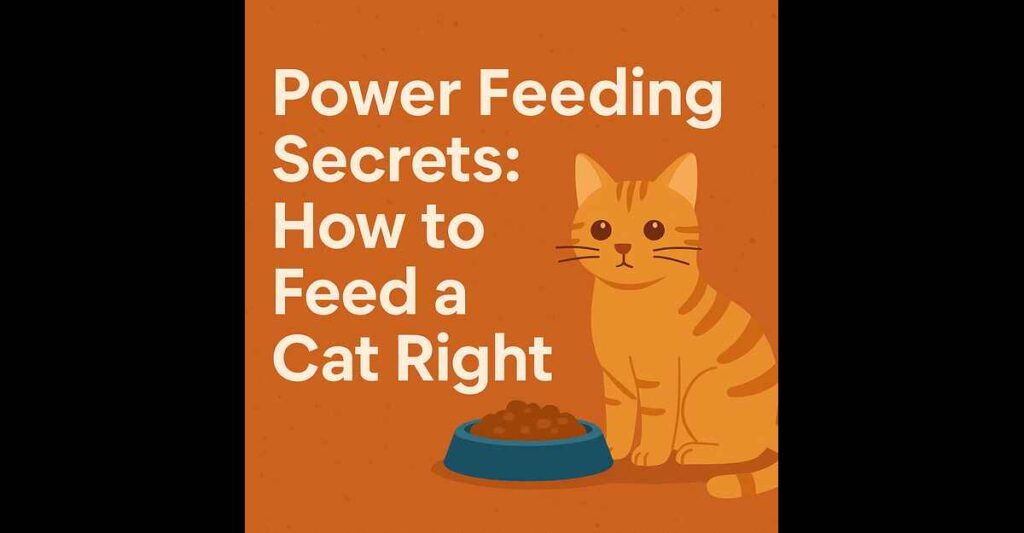Introduction
Feeding a cat isn’t just about tossing some food in a bowl.Whether you’re a newbie or a seasoned owner,getting this right matters for their health.A good routine keeps your cat happy,energetic,and healthy.And if you’re stuck on questions like how to feed a cat or how much feed a cat per day,you’re not alone.
I remember when I brought home my first kitten-I had no clue about how to feed a cat or even how much wet food to feed a kitten.It took time,trial,and advice to figure it out.That’s why this guide helps everyone:new cat parents and experienced ones alike.
Understanding Your Cat’s Nutritional Needs
Cats are not small dogs.Their dietary needs are different-very specific.They’re obligate carnivores,which means protein is king.The basics? They need:
- Animal-based proteins (think chicken,beef, fish)
- Healthy fats for energy
- Vitamins and minerals for organ health
Kittens,adults and senior cats all have different needs.A young one might eat like a machine and you’ll ask,how much should a kitten eat?They’re growing fast and need more calories. In contrast,older cats may need special food-especially if you’re wondering how much food should a cat eat when they’re not as active anymore.
Cats on special diets (think low-protein for kidney issues or grain-free for allergies) require precision.That’s why knowing how much food should I feed my cat is more than just guesswork-it’s based on age,weight,and health.
Choosing the Right Cat Food
You walk down the pet food aisle,and it’s a maze-dry food,wet food,raw,homemade.So what’s best?
Here’s a quick view:
- Dry food: Easy to store and good for dental health.Still,it’s easy to overfeed.You’ve probably googled how much dry food to feed a kitty,right?
- Wet food: Keeps them hydrated.And yep,you’ll want to check how much wet food to feed a cat depending on their age and size.
- Raw or homemade:Best when balanced.But not DIY-friendly unless you’re consulting a vet.
Reading labels matters Brands sneak in fillers,by-products and sugar.Look for real meat listed first.You’re not just choosing flavor you’re choosing health.
Feeding Schedule and Portions
Cats love routines.And sticking to regular feeding times can prevent problems like obesity or begging.But the real head-scratcher?Portion size.We’ve all asked,how much food should I feed my kitty or even worse,how much to feed a kitty chart-because labels don’t always make it clear.
Let’s break it down:
- Kittens (under 6 months): Need 3–4 meals daily.Check label guides for how much food should a kitten eat.
- Adults:2 meals per day usually work.
- Seniors:Adjust for health issues or slower metabolism.
Too much food?You risk obesity. Too little?You get a skinny, unhappy kitty.For wet food lovers,how much wet food to feed a kitten or cat depends on calories per can.
Stick to the same mealtimes.Don’t free-feed unless you’re measuring it.That’s the secret to answering how much cat food per day without overdoing it.
WebMD’s guide on how to feed a cat properly provides more insights from a medical perspective.

Special Dietary Considerations
Not every cat eats the same.If you’re dealing with allergies,weight issues,or post-surgery care,feeding changes fast.
- Got a diabetic cat?You’ll need scheduled,measured portions-no more treats on demand.
- Is your cat in a cone post-surgery?You’re likely Googling how to feed a cat wearing a cone or how to feed a cat with a cone.It’s frustrating,but using a shallow dish or hand-feeding can help.
- Need to give meds?Many of us panic at how to feed a kitty a pill.Hide it in a treat or use a pill popper.
- Cat refusing food after vet visits?Try how to feed a cat with syringe for liquids.Go slow and always keep them calm.
Each cat has quirks.Mine refused to eat after her spay-figuring out how to feed a kitty with a cone taught me patience and creativity.
Hydration and Feeding Accessories
Cats often don’t drink enough water.In the wild,their prey provides moisture.But at home, especially on dry food,hydration can be a problem.So if your cat’s on kibble,it’s critical to make sure they’re drinking enough.Wet food helps,but water bowls still matter.
Here’s what I’ve learned works best:
- Use ceramic or stainless steel bowls (plastic can cause chin acne).
- Keep bowls wide and shallow-cats hate their whiskers touching the sides.
- Place water in multiple spots,away from food bowls or litter.
Encouraging drinking can be a game-changer.Pet fountains mimic running water, and cats love them.They’re also great if you’re wondering how much water your cat really needs, especially when managing dry meat
When your cat’s healing-say,post-surgery—you’ll likely be wondering how to feed a kitty with a cone. In that case,raise the bowl or hand-feed.Same with how to feed a kitty wearing a cone;make it easier by using wider bowls or placing food on a plate.
Common Feeding Mistakes to Avoid
Feeding a cat seems simple,but small mistakes can cause big problems.Overfeeding? That’s how obesity sneaks in.Underfeeding?Leads to weakness,hair loss,even organ damage.
The biggest issues I see:
- Feeding them human food—especially toxic ones like onions,chocolate or garlic.
- Changing food too quickly.If you want to switch diets,always mix old with new over 7–10 days.
- Ignoring age-related needs.If your cat’s slowing down,you should rethink how much should a cat eat a day.
One huge mistake is guessing portions.Use a kitchen scale or measuring cup.If you’ve asked,how much dry food to feed a cat or how much wet food to feed a cat,the answer depends on calories,not volume.
And never forget: cats are subtle.They won’t tell you when something’s off.So don’t overlook what and how they eat.

Tips for Monitoring Your Cat’s Health Through Feeding
Feeding habits reflect health.If your cat’s coat is dull or they’re less active,it’s time to question the diet.When clients ask me,“how much should I feed my kitten or adult cat?” always say: watch their body,not just the bowl.
Signs your feeding plan is working:
- Glossy coat
- Steady weight
- Energy throughout the day
If your cat suddenly stops eating,loses weight or seems lethargi get a vet involved.Maybe the food isn’t suiting them—or worse,there’s an underlying issue.
When syringe-feeding,especially post-op or due to illness,many worry about how to feed a cat with syringe.The key?Go slow.Stay calm.Aim at the side of the mouth,and never force it.
And if you’re unsure how to give medication,the dreaded how to feed a tabby a pill moment can be made easier with pill pockets or liquid forms.
Conclusion
Feeding your cat the right way is more than just filling a bowl—it’s a commitment to their health.Whether you’re wondering how much to feed a tabby,how often should I feed my tabby or struggling with how to feed a cat with a cone,the answers come from paying attention to their age,activity level and special needs.Every cat is unique.You might need to adjust how you feed depending on whether you’re handling a picky eater,a senior feline or a recovering kitty that needs syringe support.
From choosing between dry and wet food to understanding exactly how much food should a cat eat,your approach should always match your cat’s lifestyle.Try not to stress about getting everything perfect from the start.You’ll learn with time,like I did when I figured out how much should a kitten eat through simple tracking and a lot of trial and error.
Keep a close eye on changes in appetite,water intake,and energy levels.These signs tell you more than labels or charts ever can.And when in doubt,always check with your vet—especially if your cat has a condition that changes their dietary needs.With a little patience,attention,and love,you’ll master how to feed your cat like a pro.
Once you understand your cat’s needs, explore our list of the best cat food for kittens and adults.
FAQs
1. How do I know how much dry food to feed a cat?
Check the label for calorie content,match it to your tabby weight,and use a measuring cup. Always adjust based on age and activity.
2. What is the best way to feed a cat that refuses to eat with a cone?
Use shallow dishes or hand-feed.Try placing food on a flat surface and use wet food to tempt them.
3. Can I feed my kitten both dry and wet food?
Yes,combining both can balance hydration and nutrition.Just calculate total calories to avoid overfeeding.
4. What’s the easiest way to feed a cat a pill?
Use pill pockets or crush and mix with a tiny amount of wet food.If all else fails,ask your vet for a liquid version.
5. How often should I feed my cat daily?
Twice a day works for most adults.Kittens need 3–4 meals,and seniors might benefit from small,more frequent meals.
